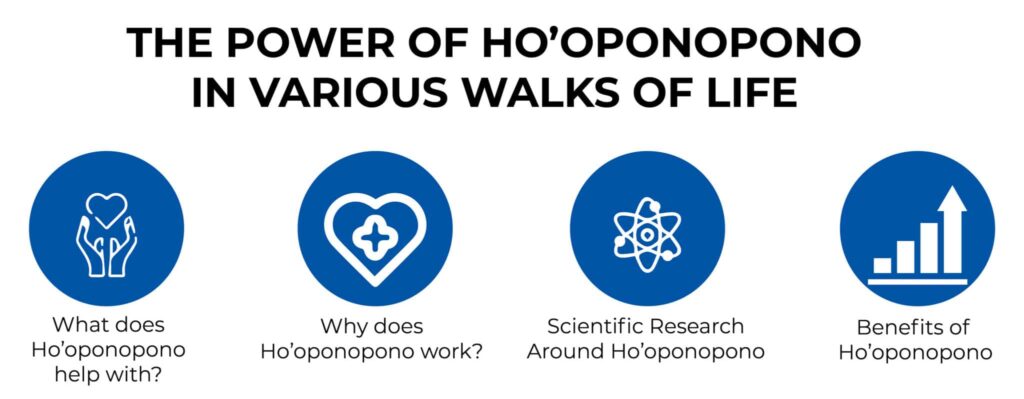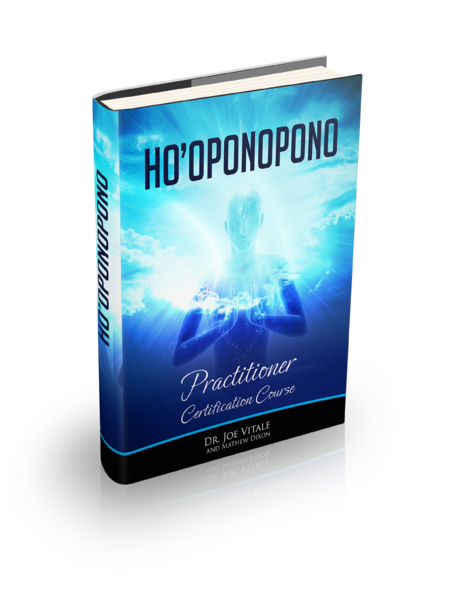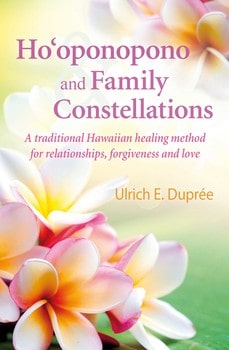Have you ever heard of Ho’oponopono? It may sound like a mouthful, but trust me, there’s some serious power behind this ancient Hawaiian practice. If you’re interested in exploring the intersection between traditional healing methods and modern therapies, Ho’oponopono is definitely something worth delving into. In this article, we’ll take a closer look at the influence of Ho’oponopono on modern therapies, and how this practice can help you heal and find peace in your life.
Ho’oponopono is a traditional Hawaiian practice that focuses on forgiveness, reconciliation, and healing. The word itself translates to “to make right” or “to rectify an error” – and that’s exactly what it aims to do. This powerful practice teaches us that we have the power to heal and transform our lives by taking responsibility for our own actions and changing our perspective. In the context of modern therapies, Ho’oponopono has gained recognition for its ability to help individuals release negative emotions, let go of past traumas, and cultivate a deep sense of inner peace. In this article, we’ll explore the principles and techniques of Ho’oponopono, and how they can be integrated into various modern therapy approaches. So, get ready to learn how this ancient Hawaiian practice can bring profound healing and transformation to your life.

The Power of Ho’oponopono in Modern Therapies
Ho’oponopono is a powerful practice that has gained popularity in recent years for its ability to heal past traumas, release emotional blocks, and improve overall well-being. This ancient Hawaiian practice has deep cultural significance and has been integrated into Western psychology, making it a valuable tool for contemporary approaches and adaptations in therapy. In this article, we will explore the origins and principles of Ho’oponopono, its role in mental health, the Ho’oponopono process, applications in therapy, scientific evidence and research, techniques and tools, its relation to the Law of Attraction, critiques and controversies, integration into mainstream therapies, case studies and personal testimonials, harnessing its power in everyday life, and ethical considerations and responsibilities.
Origins and Cultural Significance
Ho’oponopono has its origins in ancient Hawaii, where it was practiced as a traditional means of resolving conflicts and restoring harmony within families and communities. The term “Ho’oponopono” can be translated to “make it right” or “correct the mistake,” reflecting its purpose of reconciliation and healing. This practice played a vital role in the Hawaiian culture, emphasizing the importance of forgiveness, responsibility, and interconnectedness.
Philosophy and Principles
At the core of Ho’oponopono lies the belief that our thoughts, actions, and emotions create our reality. It recognizes that everyone is responsible for their own healing and that forgiveness is a powerful tool for personal transformation. The principles of Ho’oponopono include taking responsibility for problems, expressing remorse, seeking forgiveness, expressing gratitude, and cultivating love and compassion.
The Role of Forgiveness
Forgiveness is an essential aspect of Ho’oponopono. By forgiving ourselves and others, we release the emotional baggage and negative energy that can hold us back from experiencing true healing and personal growth. Ho’oponopono acknowledges that harboring resentment and holding onto grudges only perpetuates suffering and hinders our ability to live fulfilling lives.
Historical Development of Ho’oponopono
Traditional Practices in Ancient Hawaii
In ancient Hawaii, Ho’oponopono was conducted by community leaders or elders who facilitated a gathering where individuals would come together to address and discuss conflicts or issues within the community. Through open and honest dialogue, participants would express their grievances, seek forgiveness, and work towards reconciliation. Traditional practices often involved ceremonies, chanting, prayers, and the use of sacred symbols.
Integration into Western Psychology
Ho’oponopono gained recognition in the Western world when Dr. Ihaleakala Hew Len, a Hawaiian psychologist, began using the practice as a therapist in the 1980s. Dr. Hew Len successfully applied Ho’oponopono to heal mentally ill patients in a high-security hospital, focusing on healing himself first to facilitate healing in others. His unconventional approach and the remarkable results he achieved brought Ho’oponopono into the spotlight and sparked interest within the field of psychology.
Contemporary Approaches and Adaptations
Since its integration into Western psychology, Ho’oponopono has evolved and adapted to modern contexts. Various practitioners and therapists have developed their own interpretations and variations of the practice, combining Ho’oponopono with other therapeutic modalities such as cognitive-behavioral therapy, mindfulness, and energy healing techniques. These contemporary approaches continue to deliver transformative results and have expanded the reach of Ho’oponopono beyond its traditional roots.

Ho’oponopono and Mental Health
Healing Past Traumas
Ho’oponopono offers a profound pathway to healing past traumas by addressing the root causes of emotional pain and suffering. By acknowledging and taking responsibility for our own role in the creation of negative experiences, we can begin the process of forgiveness and release. Through Ho’oponopono, individuals have found healing from childhood traumas, relationship wounds, and deeply ingrained patterns of self-sabotage.
Releasing Emotional Blocks
Emotional blocks can manifest as limiting beliefs, fears, and negative thought patterns that hinder personal growth and well-being. Ho’oponopono provides a gentle yet powerful method for releasing these emotional blocks and freeing oneself from their grip. By expressing remorse, seeking forgiveness, and cultivating gratitude and love, individuals can release emotional baggage and create space for new positive experiences and personal transformation.
Improving Overall Well-being
Ho’oponopono is not limited to addressing specific problems or traumas; it is a practice that promotes overall well-being. By cultivating forgiveness, gratitude, and love, individuals can experience a greater sense of peace, inner harmony, and happiness. Ho’oponopono encourages self-reflection, self-improvement, and a deeper connection with oneself and others, leading to a more fulfilling and meaningful life.
The Ho’oponopono Process
Identifying and Taking Responsibility for Problems
The first step of the Ho’oponopono process involves identifying and acknowledging the problems or conflicts within oneself or one’s relationships. This requires honest self-reflection and an openness to taking responsibility for one’s role in the creation of these issues. By recognizing our own contributions, we empower ourselves to make the necessary changes and seek healing.
Using Four Key Phrases: I’m Sorry, Please Forgive Me, Thank You, I Love You
The Ho’oponopono process involves using four key phrases: “I’m sorry, please forgive me, thank you, I love you.” These simple yet powerful phrases are repeated as mantras to facilitate healing and reconciliation. By sincerely expressing remorse, seeking forgiveness, expressing gratitude, and cultivating love, individuals can release negative energy, resolve conflicts, and restore harmony.
Repeating the Process for Healing and Reconciliation
Ho’oponopono is an ongoing process that requires continuous practice and commitment. It is not a quick fix or a one-time solution. By regularly engaging in the Ho’oponopono process, individuals can deepen their self-awareness, heal old wounds, and strengthen their relationships. Each repetition of the process brings new insights, healing, and opportunities for personal growth.

Applications of Ho’oponopono in Therapy
Addressing Relationship Issues
Ho’oponopono offers a valuable framework for addressing relationship issues and promoting reconciliation. By taking responsibility for one’s actions, expressing remorse, seeking forgiveness, and cultivating love and gratitude, individuals can heal relationship wounds, resolve conflicts, and restore harmony. The practice of Ho’oponopono can be used in individual therapy, couples counseling, and group settings to facilitate healing and improve relationship dynamics.
Healing Ancestral Wounds
Ho’oponopono recognizes that unresolved ancestral wounds can affect individuals in the present. By engaging in the practice, individuals can heal not only their own wounds but also the wounds of their ancestors. Ho’oponopono provides a means for acknowledging and releasing generational traumas, allowing individuals to break free from negative patterns and create a more positive and empowered future.
Resolving Inner Conflicts
Inner conflicts can arise when individuals have conflicting desires, beliefs, or values. Ho’oponopono offers a process for addressing these conflicts, bringing them to the surface, and reconciling them. By taking responsibility for the conflicts within oneself, expressing remorse, seeking forgiveness, and cultivating love and gratitude, individuals can resolve inner conflicts and achieve greater inner harmony and alignment.
Scientific Evidence and Research
Studies on the Efficacy of Ho’oponopono
While scientific research on Ho’oponopono is limited, there are studies that suggest its efficacy in promoting emotional healing and well-being. One study conducted by Dr. Matthew James, a clinical psychologist, explored the effects of Ho’oponopono on participants with symptoms of depression and anxiety. The study found that participants who practiced Ho’oponopono experienced a significant reduction in symptoms and reported an increased sense of well-being.
Neuroscientific Perspectives on Healing Through Forgiveness
Neuroscientific research has shed light on the healing power of forgiveness, supporting the principles underlying Ho’oponopono. Studies have shown that forgiveness activates neural pathways associated with positive emotions, empathy, and increased well-being. Forgiveness has been found to reduce stress, improve mental health, and contribute to overall physical and emotional well-being.
Integration of Spiritual Practices in Evidence-Based Therapies
There is a growing recognition within the field of psychology of the importance of integrating spiritual practices in evidence-based therapies. The incorporation of practices such as mindfulness, meditation, and forgiveness has shown promising results in improving mental health outcomes. Ho’oponopono, with its emphasis on forgiveness, self-reflection, and healing, aligns with this holistic approach to therapy and provides a valuable addition to evidence-based treatment modalities.

Ho’oponopono Techniques and Tools
Meditation and Visualization Exercises
Meditation and visualization exercises are commonly used in Ho’oponopono to facilitate healing and transformation. Through guided meditation and visualization, individuals can access their subconscious mind, release emotional blocks, and visualize desired outcomes. These techniques help to align the conscious and subconscious mind, promoting self-awareness, healing, and personal growth.
Using Affirmations and Mantras
Affirmations and mantras play a significant role in Ho’oponopono. By repeating positive statements or phrases, individuals reprogram their subconscious mind and reinforce desired beliefs and outcomes. Affirmations such as “I am sorry, please forgive me, thank you, I love you” serve as powerful reminders of the principles of Ho’oponopono and assist in the healing and reconciliation process.
Writing Forgiveness Letters
Writing forgiveness letters is another technique used in Ho’oponopono to release emotional baggage and seek reconciliation. These letters serve as a means of expressing remorse, seeking forgiveness, and expressing gratitude. Writing forgiveness letters allows individuals to release negative emotions, gain clarity, and establish a sense of closure.
Ho’oponopono and the Law of Attraction
Aligning with Abundance and Positivity
The Law of Attraction posits that thoughts and beliefs have the power to attract corresponding experiences and outcomes. In Ho’oponopono, individuals focus on aligning their thoughts, feelings, and beliefs with abundance, positivity, and love. By practicing Ho’oponopono, individuals can release limiting beliefs, clear subconscious obstacles, and create a vibrational match for desired outcomes.
Manifesting Desired Outcomes
Ho’oponopono can be utilized as a tool for manifesting desired outcomes. By consistently engaging in the Ho’oponopono process, individuals align themselves with the energy of what they wish to manifest and tap into the power of intention and manifestation. Through forgiveness, gratitude, and love, individuals can create a fertile ground for the manifestation of their desires.
Clearing Subconscious Obstacles
The subconscious mind plays a significant role in the Law of Attraction. Unresolved emotions, limiting beliefs, and negative thought patterns stored in the subconscious can act as obstacles to manifesting desired outcomes. Ho’oponopono offers a means for clearing these subconscious obstacles, allowing individuals to create a more positive and supportive mindset for the manifestation process.

Critiques and Controversies
Cultural Appropriation Concerns
Ho’oponopono is a sacred Hawaiian practice with deep cultural significance. Its widespread adoption and adaptation by individuals outside of the Hawaiian culture have raised concerns about cultural appropriation. It is essential to approach Ho’oponopono with respect, acknowledging its cultural origins, and seeking to understand and honor the practices within their proper context.
Unverified Claims and Pseudoscience
As with any therapeutic practice, there have been unverified claims and beliefs surrounding the effectiveness of Ho’oponopono. It is important to approach these claims with skepticism and seek credible research and evidence to support the practice. While there is anecdotal evidence and some scientific research supporting Ho’oponopono, it is crucial to maintain a discerning approach and avoid pseudoscience.
Balancing Traditional Practices with Modern Contexts
Ho’oponopono has evolved and adapted to modern contexts, reflecting the changing dynamics of society. However, it is essential to strike a balance between honoring the traditional practices and principles of Ho’oponopono and integrating them into contemporary therapeutic modalities. Maintaining the integrity and authenticity of the practice while embracing innovation and adaptation is crucial to ensure its continued effectiveness and relevance.
Integration of Ho’oponopono in Mainstream Therapies
Incorporating into Psychotherapy and Counseling
Ho’oponopono has found its place in mainstream therapies such as psychotherapy and counseling. Therapists and counselors integrate Ho’oponopono into their practice to facilitate healing, reconciliation, and personal growth. By incorporating the principles and techniques of Ho’oponopono, therapists can enhance the therapeutic process and empower their clients towards self-discovery and transformation.
Collaboration with Other Complementary Practices
In addition to psychotherapy, Ho’oponopono can be combined with other complementary practices to further enhance its effectiveness. Mindfulness, energy healing modalities, and cognitive-behavioral therapy are just a few examples of practices that can synergize with Ho’oponopono to create a holistic and integrative approach to therapy. Collaborating with other practitioners and modalities allows for a comprehensive healing experience for individuals seeking support and transformation.
Training and Certification for Practitioners
As Ho’oponopono gains recognition and popularity, the need for trained and certified practitioners arises. Formal training programs and certification processes ensure that practitioners have a comprehensive understanding of the practice, its principles, and its application in therapy. Training courses provide practitioners with the necessary skills and knowledge to effectively incorporate Ho’oponopono into their practice, adhering to ethical guidelines and best practices.
Case Studies and Personal Testimonials
Real-Life Examples of Ho’oponopono Success Stories
Numerous individuals have experienced transformative results through the practice of Ho’oponopono. Personal testimonials and case studies showcase the power of forgiveness, self-reflection, and healing that Ho’oponopono can bring. Stories of individuals finding resolution in their relationships, healing from trauma, and experiencing personal growth serve as inspiration and validation of the efficacy of Ho’oponopono.
Individual Experiences and Transformations
The practice of Ho’oponopono is deeply personal, and each individual’s experience and transformation are unique. Individuals have reported experiencing profound shifts in their mindset, improved relationships, and a greater sense of inner peace and well-being. By engaging in Ho’oponopono, individuals gain the tools and insights necessary to take ownership of their healing journey and create positive change in their lives.
Insights from Therapists and Clients
Therapists and clients who have incorporated Ho’oponopono into their therapeutic process offer valuable insights into the practice’s effectiveness. Through interviews and shared experiences, therapists share how Ho’oponopono has enriched their therapeutic work and contributed to positive client outcomes. Clients express their gratitude for the transformative effects of Ho’oponopono, affirming its potential to bring healing, reconciliation, and personal growth.
Harnessing the Power of Ho’oponopono in Everyday Life
Self-Forgiveness and Self-Compassion Practices
Ho’oponopono extends beyond the therapy room and can be applied to everyday life. By practicing self-forgiveness and self-compassion, individuals can release self-judgment, heal emotional wounds, and cultivate a deep sense of self-love. These practices empower individuals to take ownership of their healing and live with greater kindness and compassion towards themselves and others.
Building Harmonious Relationships
Ho’oponopono offers a framework for building and maintaining harmonious relationships. By taking responsibility for one’s actions, expressing remorse, seeking forgiveness, and cultivating love and gratitude, individuals can foster open communication, trust, and understanding in their relationships. Ho’oponopono encourages individuals to approach their relationships with compassion, empathy, and a willingness to grow and heal together.
Creating a Peaceful and Fulfilled Existence
The practice of Ho’oponopono provides individuals with the tools and mindset to create a peaceful and fulfilled existence. By releasing emotional baggage, clearing negative thoughts and beliefs, and aligning with forgiveness, gratitude, and love, individuals can create a more positive and supportive internal environment. Through Ho’oponopono, individuals can navigate life’s challenges with resilience, grace, and a deep sense of inner peace.
Ethical Considerations and Responsibilities
Respecting Cultural Origins and Indigenous Knowledge
Ho’oponopono, rooted in Hawaiian culture, demands respect and reverence for its cultural origins. It is essential to approach Ho’oponopono with cultural sensitivity, acknowledging and honoring its indigenous roots. Practitioners and individuals engaged in Ho’oponopono should seek to understand and respect the cultural context, history, and traditions associated with the practice.
Maintaining Integrity and Authenticity
As Ho’oponopono continues to evolve and adapt, it is crucial to maintain the integrity and authenticity of the practice. Practitioners and individuals engaging in Ho’oponopono should strive to embody the principles and values of the practice and avoid diluting or distorting its essence. Honoring the traditional practices and preserving the integrity of Ho’oponopono ensures its effectiveness and continued cultural relevance.
Supporting Communities and Practitioners
To ensure the longevity and sustainability of Ho’oponopono, it is essential to support the communities and practitioners who are the custodians of this ancient practice. Supporting indigenous communities, attending cultural workshops and events, and seeking guidance and teachings from respected practitioners are ways to foster a deeper understanding and appreciation for Ho’oponopono. Financially supporting practitioners and communities contributes to the preservation and continuity of this sacred practice.
Conclusion
Ho’oponopono is a powerful and transformative practice that has made its mark on modern therapies. Its ability to heal past traumas, release emotional blocks, and improve overall well-being has gained recognition within the field of psychology. By integrating the principles and techniques of Ho’oponopono into mainstream therapies, therapists and individuals can facilitate healing, reconciliation, and personal growth. Ho’oponopono offers practical tools and insights for harnessing its power in everyday life, creating a more peaceful and fulfilling existence. However, it is crucial to approach Ho’oponopono with cultural sensitivity, ethical considerations, and a commitment to respecting its cultural origins. Through a balanced approach that preserves the integrity of the practice while integrating it into contemporary contexts, Ho’oponopono can continue to help individuals on their healing journeys and contribute to the well-being of communities around the world.